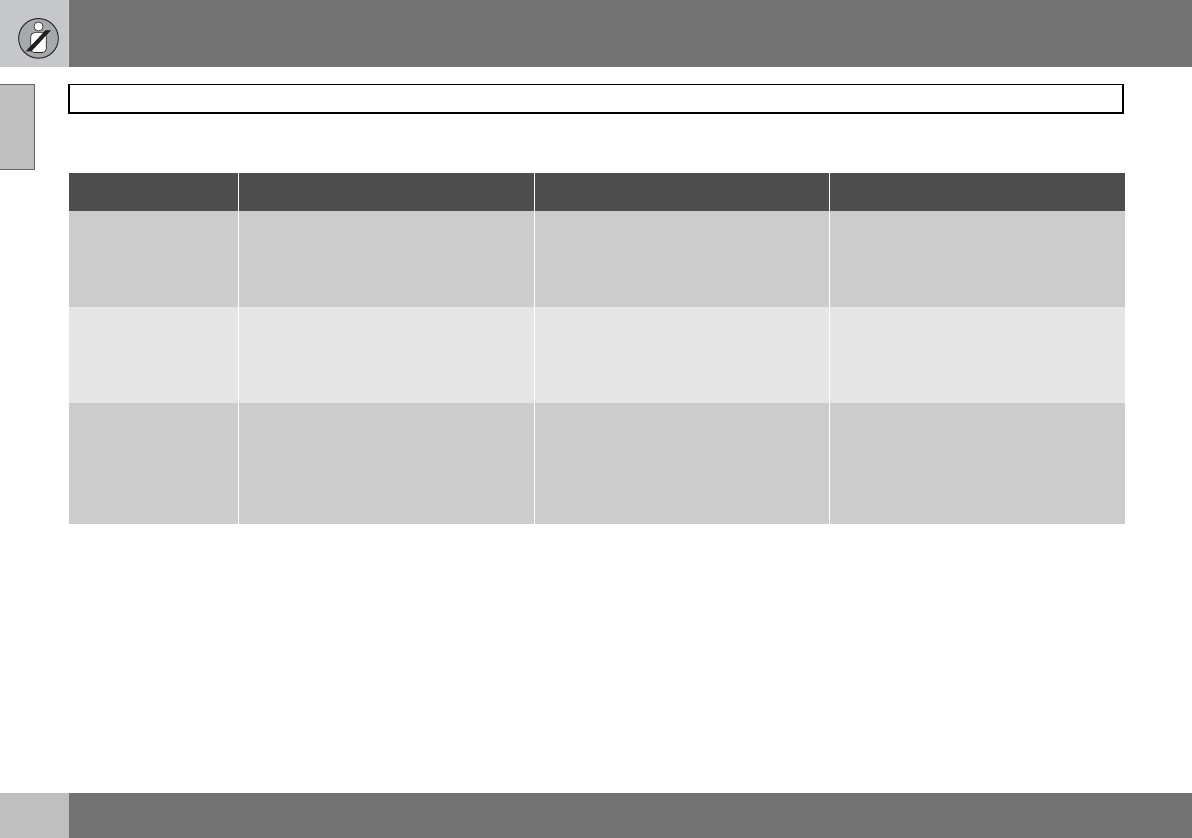
01 Safety
30
Child safety
01
Placement of children in the car
Weight/age
Front seat
1
Outer rear seat Centre rear seat
<10 kg
(0–9 months)
Rear-facing child seat, secured with
seatbelt and straps. Use a protective
cushion between the child seat and the
dashboard.
L
2
: Type approval no. E5 03135
Rear-facing child seat, secured with
seatbelt, support legs and straps.
L
2
: Type approval no. E5 03135
Rear-facing child seat, secured with
seatbelt, support legs and straps.
L
2
: Type approval no. E5 03135
9–18 kg
(9–36 months)
Rear-facing child seat, secured with
seatbelt and straps. Use a protective
cushion between the child seat and the
dashboard.
L
2
: Type approval no. E5 03135
Rear-facing child seat, secured with
seatbelt, support legs and straps.
L
2
: Type approval no. E5 03135
Rear-facing child seat, secured with
seatbelt, support legs and straps.
L
2
: Type approval no. E5 03135
15–36 kg
(3–12 years)
Booster cushion with or without
backrest.
L
2
: Type approval no. E5 03139
Booster cushion with or without
backrest.
L
2
: Type approval no. E5 03139
Integrated booster cushion
3
.
L
2
: Type approval no. E5 03168
Booster cushion with or without
backrest.
L
2
: Type approval no. E5 03139
1
For information on activated/deactivated airbag (SRS), see page 19.
2
L: Suitable for certain child seats as listed in the specified type approval. Child seats can be vehicle-specific, limited, semi-universal or universal.
3
Option


















